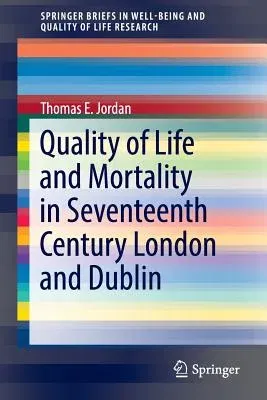Thomas E Jordan
(Author)Quality of Life and Mortality in Seventeenth Century London and Dublin (2017)Paperback - 2017, 5 September 2016

Qty
1
Turbo
Ships in 2 - 3 days
In Stock
Free Delivery
Cash on Delivery
15 Days
Free Returns
Secure Checkout
Part of Series
Springerbriefs in Well-Being and Quality of Life Research
Print Length
70 pages
Language
English
Publisher
Springer
Date Published
5 Sep 2016
ISBN-10
3319443674
ISBN-13
9783319443676
Description
Product Details
Author:
Book Edition:
2017
Book Format:
Paperback
Country of Origin:
NL
Date Published:
5 September 2016
Dimensions:
23.39 x
15.6 x
0.46 cm
ISBN-10:
3319443674
ISBN-13:
9783319443676
Language:
English
Location:
Cham
Pages:
70
Publisher:
Weight:
131.54 gm

